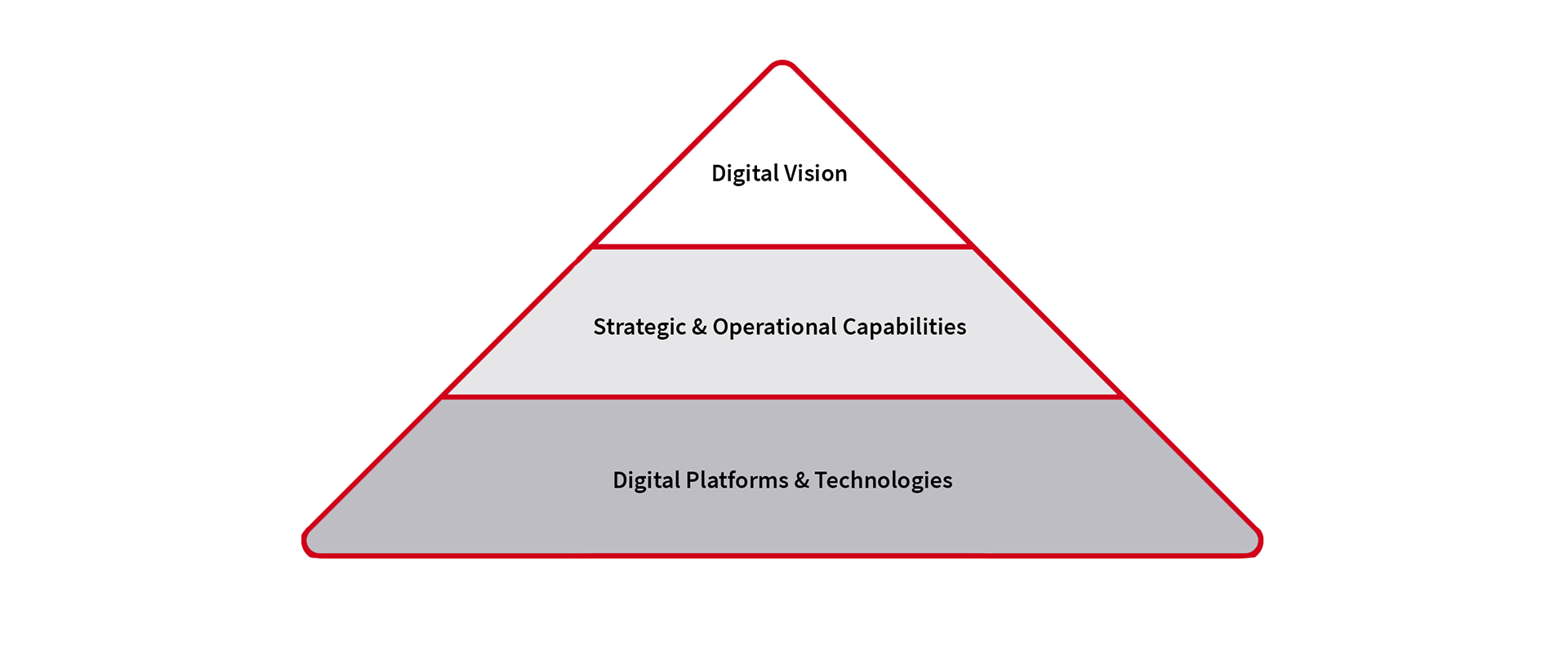Blog
23/05/2018
Digital Transformation: the journey begins
4 minute read
The 4th Industrial Revolution is here — and it brings with it a digital transformation opportunity. We are all fed information about technology platforms that can help us to connect to our customers in new ways, rebuild our business models, increase customer satisfaction, automate business processes, increase revenue, etc. But in this complex new world of possibilities, where do you start your journey? Your business vision may or may not have changed but one thing is clear: your journey to get there has. And yes — for the journey to be successful, you will need strong technological platforms and systems, but it is even more important how your organization will face and embrace the challenges.
There are various approaches to start your digital transformation journey. Some companies prefer a top-down approach, whereas others may opt for a bottom-up strategy to get started, but either way, we are probably trying to achieve the same change in the end. Before getting started with your digital transformation, it is useful to understand the big picture of what you want to achieve and how that may affect your company. One good start is to define your overall digital vision — ‘where do we want to be?’ — and communicate this vision clearly to all employees at all levels to ensure everyone understands where you are going. A clear and well-rooted vision is fundamental to the success of your digital transformation — just remember that it is a company-wide process, and the time and effort needed should not be underestimated.
So now we have our digital vision. What next on our digital transformation journey?
It is vital to ensure that your organisation has the capabilities needed to achieve your vision. Start by assessing your organisation’s strategic and operational capabilities to understand what is crucial (or not) to the success of your digital transformation. These capabilities can then be analysed as to where you want to go (future state) and where you are today (current state, your digital maturity level). When you analyse and define your future state, try not to let your current business constraints limit your vision. When the gap between the current and future state is clear, you can define the actions needed to get your digital transformation journey in the right direction. During this gap analysis, do not hesitate to challenge existing constraints — some of these may be corporate myths that can actually be solved rather quickly. And keep in mind that a digital transformation is not about reaching a fixed goal — it is a mindset change based on a vision of the direction where you and your organisation want to go.
Your digital platforms and technologies enable your company to develop the capabilities the way you want. Many new technology requirements are customer-driven, and so we see a big change in CRM-related technologies within marketing, sales and customer service. The importance of selecting the right CRM platform has never been more important than it is today.

The strategic and operational capabilities affected by your digital transformation — and which you should prioritise — may differ based on your company, but in general, these capabilities may be worth considering:

In the next articles, we will explore how digital transformation affects each of the organisational capabilities. Stay tuned!

Thomas Höstner
Regional Manager & Business Consultant
Fluido
Read next
19/06/2018
Fluido Favorites: Summer'18
5 minute read
